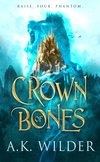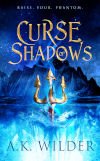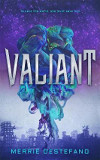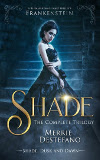.
(Warning: this post does contain a spoiler regarding the outcome of A Wizard of Earthsea. I'll alert you again once we get there.)
Otherwise, welcome back, gentle readers, to the Year of the Villain in our own, much loved, Fantasy fiction.
If you're a regular here, you may be thinking,
"Hey, doesn't Helen always go from Tolkien to Ursula Le Guin?"In which case, although it's by no means "a truth universally acknowledged", you wouldna be wrong either. Very often, I do follow Tolkien with Le Guin.
Here's why. Foremost, I perceive both as hugely influential on the genre, but also profoundly different in terms of how their books work. So when looking at any aspect of fantasy storytelling, such as villains, worldbuilding, or magic, their styles illuminate very different terrain.
They're both master storytellers as well, so there's much to be learned, as well as to delight in, by shining a light on their work.
So-o, in last month's deep dive into The Lord of the Rings I pointed to its villains being monolithic and very often remote, and their evil world-threatening, i.e. Sauron. Even secondary antagonists such as the Lord of the Nazgul and Saruman are large scale and relatively "distant", and although Gollum is small, personal, and vicious, his corruption stems from the ring, and via the ring, from Sauron.
In terms of Le Guin's Earthsea, I'm going to look at the first trilogy, which I consider the most formative, although the same principles inform all her work. The three books are A Wizard of Earthsea, The Tombs of Atuan, and The Farthest Shore.
The Nature of Earthsea EvilIn general, Earthsea's evil -- and the villains that go with it -- are not world-threatening. (Bear with me, all those who're shouting The Farthest Shore, because I'll come to that. :-) ) Evil is part of the fabric of the world, particularly its earth, as we see with the stone of the Terrenon and the tombs of Atuan, and given effect by those who choose to serve it. For example, Serret and her husband with the Terrenon stone, and the priestess Kossil, in the tombs.
The evil may seek expansion through its servants, but in general it is confined to a geographic location, with many counterbalancing forces in the Earthsea world. These include its oceans and the wizards, or mages, who are charged with maintaining the balance of magic and powers. And because the old evils of earth rely on human servants, the servants' villainy manifests as corruption and possession, raiding and murder within a sphere of influence, rather than all-out war on the world.
Dragons are another of the forces the wizards must contend with. Although powerful magical beings they are not evil in and of themselves. Rather, very like humans, they may, individually or collectively, engage in villainous deeds such as killing, looting, and destruction. Like the evil wrought by the old powers of the earth, through their servants, the dragons' villainy is limited by their physical and magical strength, so tends to be regional.
This is the pattern of evil established through A Wizard of Earthsea and The Tombs of Atuan, in which the innate evil of stone and tombs, for example, are given shape through villains such as the Lord of the Terranon and Kossil. Alternatively, dragons like Yevaud lay waste to islands like Pendor -- not unlike the Kargish raiders that go a-viking, murdering, looting, and pillaging through Gont.
The Contest Between Hero and Villain
If Earthsea's evil, and its villains, were limited to the old powers of
earth and the dragons, the only difference between its approach and that of The Lord of the Rings would be one of scale. But in A Wizard of Earthsea, Le Guin gives the contest between protagonist and antagonist a very different focus to Frodo--and Gollum's--struggle against the externalized evil of the ring.
The protagonist of all three novels is Ged. The youthful wizard of the first book is arrogant, proud, and jealous, as well as strong -- all qualities that lead him to undertake forbidden magic, unleashing a demon into the world. Consistent with the overall approach of the worldbuilding, the nameless demon's primary danger is to Ged himself, because it seeks to possess him. If successful, it will then use his strength and magical ability to do greater harm.
[
Spoiler follows -- and although, given the fame of the story, the ending is probably well known, if it's a concern, maybe skip the next paragraph or if required, stop reading altogether.)
In order to defeat the demon, Ged must name it. After a long chase across sea and land, he finally comes face-to-face with his nemesis -- and the name they both speak in that moment is the same. The demon generated by his act of hubris is not an external force, but a manifestation of his jealousy, hatred, and pride. In the end, Ged is both the hero and the villain, with the evil that must be defeated originating within himself.
The Farthest Shore, Earthsea #3
This is the third -- and was for a long time the final -- book in the Earthsea series. In this book, the evil is world threatening, as a breach in the barrier between life and death saps knowledge and unravels magic, destroying Earthsea's balance. Yet consistent with Le Guin's overall approach, the threat arises through the hubris, folly, and self-will of a sorcerer, Cob, in seeking to avoid death, which twists the laws of nature -- rather than from a malevolent external power.
To my mind, this exemplifies the chief difference between the villains of Tolkien and Le Guin. In one case (Tolkien), the villains largely operate as "the other", their evil an external force. In the other (Le Guin), the evil is integral to the world and the villainy arises through the weakness, ill nature, and ethical failings of human beings: forces that exist within all of us.
I believe these represent the two main approaches to writing villains in fantasy storytelling, which is why they are my starting point for the series. In the hands of master storytellers like Tolkien and Le Guin, both approaches make for great reading, which is why I've always loved their work.
© Helen Lowe
~*~
About the AuthorHelen Lowe is an award-winning novelist, poet, and lover of story. With
four books published to date, she is currently completing the final installment in The Wall Of Night series.
Helen posts regularly on her “…on Anything, Really” blog, monthly on the
Supernatural Underground, and tweets @helenl0we






































